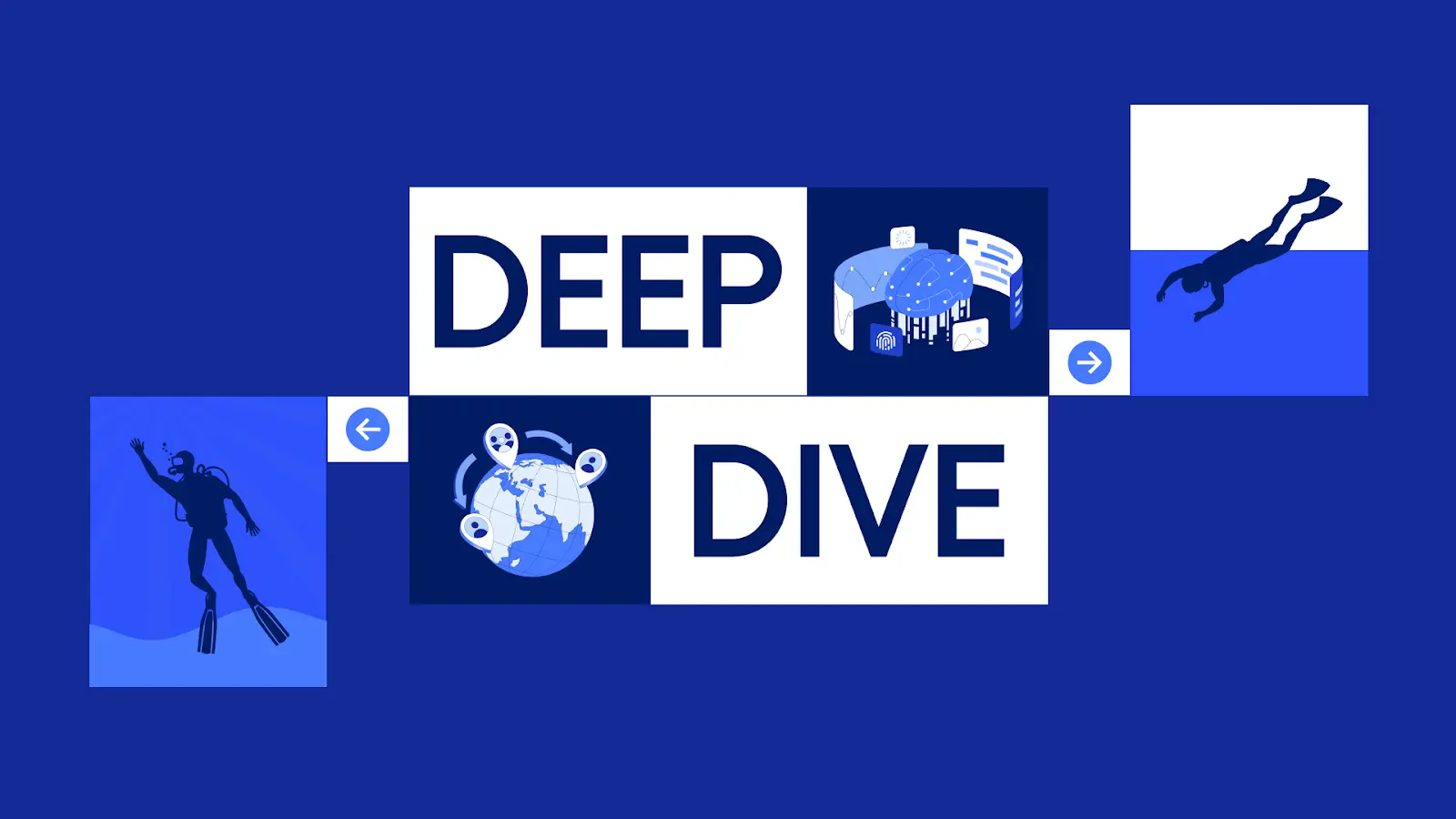Recently, Multiplier made some bold predictions for the world of HR in 2024, offering insight into the current state of employment and how things will unfold over the next 12 months. If you haven’t perused it yet, we highly suggest picking up a copy:
State of Work | Predictions Report for HR Leaders in 2024
2023 is in the rearview mirror, and January flew by faster than Usain Bolt on a good day, so there’s no time like the present to do a deep dive into these 2024 predictions and highlight their importance for the coming year. We will cover our first four predictions— siloed workforces, skills-first recruiting, work-life integration, and artificial intelligence (AI).
Down with silos, up with collaboration
Silos, or siloing, is the isolation of a system, process, or department from others. Silos aren’t a new problem that arose last year, but they continue to create headaches for global companies and teams—in 2024, business leaders are looking to address the issue and implement change for siloed workforces.
In workplaces, siloing hinders collaboration, transparency, and the ability to share information efficiently while preventing duplicated work. It also creates subcultures due to decreased communication and engagement with other teams. Unfortunately, this is how many or most organizations still operate despite the vast array of technology available to ensure collaboration and cohesive workflows.
While silos have had some success in the past, we find ourselves in a new era of business where employee requirements are evolving. The presence of numerous silos impedes information sharing among different groups, resulting in a lack of resource utilization, confusion, subpar performance, duplicated efforts, and a significant divide within the organization. Adapting to this changing landscape is imperative to foster collaboration and drive success.
Breaking down silos overcomes narrow perspectives and offers a comprehensive understanding of entire organizations. Implementing workforce management and HR solutions is critical to provide a clear and transparent overview of employee tasks and responsibilities—combine this with a data-driven culture where information and employee workloads go hand-in-hand…*chef’s kiss*
“For companies to expand globally, they need an integrated global system to ensure there are no silos. Having one source of truth is crucial to ensure compliance in every market.”
– Sagar Khatri, Multiplier Co-Founder/CEO (from The Debrief)
While researching and compiling our predictions report, we stumbled upon a range of interesting statistics that offer additional insight into the issues facing siloed workforces and the technology that may be the solution they require.
- Report stats show that 30% of professionals waste as much as 12 hours a week chasing vital data
- 55% of organizations have a data-driven culture for people analytics.
- 50% of small business HR experts and 3.2 million small-to-medium businesses use cloud-based software to manage HR functions.
Cloud-based systems and automation are just a few solutions that set the stage for efficient processes that promote growth and advancement, benefiting the business and enhancing employee productivity. This year, siloed workforces are unlikely to be eliminated, but they’ll most definitely evolve and improve through strong leadership and greater awareness of silo issues.
Skills to shape the working world
“Wait, you don’t have a degree? Sorry, next.”
This was the narrative within employment for many years. In many cases, it still is. However, times are changing, and skilled workers will be priority hires in 2024 and beyond. Simply put, businesses need skills to pay the bills.
Glaring skill gaps are set to cost businesses A LOT of money, several trillion, according to estimates.
Scary stuff, right? It’s no wonder that the age-old narrative is shifting away from elitism and toward hiring the most skilled individuals for a role. A study by the Burning Glass Institute showed a decline in job postings that require a Bachelor’s degree. This trend can be attributed to the fact that only one-quarter of the workforce possesses such a qualification, with an even smaller percentage (15%) holding advanced degrees.
The skills-first recruitment era
Whether you call it the new “wave,” “era,” or anything else the cool kids are saying these days, skills-first recruitment is a sign of evolving times and a hop, skip, and jump away from impactful change. For example, LinkedIn’s Skills First Report showed that 19% of job listings prioritized skills over education or qualifications, improving on last year’s 15%.
Moreover, their Future of Recruiting report deems skill-based hiring as “the gold standard.” The data is very telling for recruiting trends from the previous years as well as the years to come, such as:
- Recruiters looking for candidates on LinkedIn are 25% more likely to search for skills than in the previous three years.
- Recruiters are 50% more likely to prioritize skills over years of experience.
- 75% of recruitment professionals consider skills-first hiring a top priority over the next year.
“Increasingly, we’re noticing that what you study often has no relevance to what you end up doing. For instance, at a rough guess, about 50% of people at Multiplier have chosen different fields of study to the one they now work in. I myself studied civil engineering, started my career as an investment banker, and am now the CEO of a software company.”
– Sagar Khatri, Multiplier Co-Founder and CEO (from The Debrief)
This innovative and more logical approach to recruitment is vital for candidates but also for the many employers with skill gaps that affect productivity and business growth. Embracing a skills-first approach to recruitment and employee development expands the talent pool exponentially, enabling businesses to discover professionals who align perfectly with specific requirements. This strategic shift enhances the quality of candidates and ensures a seamless fit for long-term success.
Work-life integration: refining the employee experience
Modern organizations take proactive steps to promote a healthy work-life balance, prevent burnout, and foster sustained productivity. However, a Gallup report shows that 76% of employees have experienced burnout at some point, with 28% indicating that it’s a frequent occurrence in their work lives. Doesn’t seem very balanced, does it?
Burnout is a very real and severe problem for employees and the businesses they represent. While researching the health connotations of burnout for our report, we discovered a fantastic survey by The Mental Health Foundation, and the stats were quite an eye-opener.
The survey found that when working long hours, 27% of employees feel depressed, 34% feel anxious, and 58% feel irritable. Additionally, it showed a range of additional issues, including:
- 33% feel unhappy about how much time they spend working.
- More than 40% neglect other areas of their life because of work.
- Nearly two-thirds of employees experience issues with their personal lives—such as impeded personal growth, strained relationships, and physical and/or mental health challenges.
For this reason, work-life integration is shaping up to be a worthy successor, offering employees the freedom and flexibility to integrate work and life into one another—rather than desperately attempting to balance both and ultimately burning out. The emphasis lies not on the constant online presence or the number of hours an employee puts in but rather on their output and productivity.
“We are progressing towards a phenomenon where work seamlessly integrates with your life. That means, for instance, I might choose to start my workday at 6 AM and then opt to visit the gym at 2 PM. Or if you’re a working parent, you can wake up, get your kids ready for school, send them off, and then start working. It’s about being able to truly design your own working hours.”
– Sagar Khatri, Multiplier Co-Founder and CEO.
It’s clear to see that the world of work has evolved significantly over the last few years, especially with the rise of remote working during and after the pandemic. In remote and hybrid work structures, employees juggle work obligations and personal errands, increasing the likelihood of burnout. So much so that a report last year revealed that 98% of remote workers prefer it and would recommend it to a friend.
Freedom and flexibility have become core tenets of the modern working world. In 2024 and beyond, workers will lean toward jobs that enable a flexible work schedule with the option to be a remote or hybrid employee. In the words of Multiplier’s CEO, Sagar Khatri, “We are progressing towards a phenomenon where work seamlessly integrates with your life.”
As more employers minimize the vital nature of conventional working hours, it paves the way for a future where the focus is productivity and results rather than policing hours employees spend at a desk.
Smarter, agile hiring with AI solutions
To say artificial intelligence is a hot topic would be a massive understatement. It’s everywhere! From global employment to entertainment to coffee shop conversations, AI is very much the talk of the town and the world. In the workplace, artificial intelligence offers convenience and is valuable for boosting efficiency and productivity.
AI solutions are now used across a vast array of industries and for a multitude of simple and complex tasks, such as recruitment and workforce management. According to a survey of HR leaders, a staggering 85% currently leverage AI in their daily work, with an additional 55% anticipating increased adoption in the future.
There’s always going to be resistance and concern when machines are allowed to run the asylum, so to speak. But AI has already proved itself to be a worthy ally for HR leaders, a friend, not a foe.
“When the internet emerged in the late 1990s, early 2000s, there were similar questions being asked as there are today about AI—whether it would replace humans and so on. However, as it turned out, it created more jobs. The entire concept of working, being distributed and connected online would not have been possible without the internet. I believe every innovation that emerges ultimately aids in productivity.”
In recruitment and hiring, many companies are leveraging AI to tailor candidate requirements, automate mundane tasks such as scheduling, and streamline the initial stages of the selection process. This not only enhances efficiency but also improves the overall candidate experience.
Recruiters armed with the right tools can swiftly screen resumes and curate a shortlist of top candidates. Moreover, businesses are harnessing the power of AI to streamline job listing creation, salary estimation, and administrative duties like interview scheduling. This optimization of resources frees up valuable time and energy for strategic initiatives that truly enhance organizational value.
Artificial intelligence creates data-driven cultures
Another way artificial intelligence will be used to enhance and revolutionize the state of work will be by establishing data-driven cultures. A key aspect of our HR prediction for AI usage was using data to establish, drive, and manage teams. And a new 2024 survey shows how the urgency to establish data-driven cultures has increased.
Hot off the press with some brand-new 2024 stats! In this year’s Wavestone data leaders survey. The percentage of organizations with “established data and analytics cultures” increased from 21% to 43%. Companies that had “created a data-driven organization” doubled from 24% (2023 survey) to 48% in 2024. This was far more improvement than at any time in the survey’s history.
When considering the power of data and the role of artificial intelligence in HR and global employment, leveraging AI tools can automate vital tasks while freeing up time for fostering team collaboration and mentorship. Furthermore, AI solutions have the capability to assess performance and establish meaningful objectives for every employee. This eliminates the necessity for manual procedures or individual evaluations that are time-consuming and often yield subpar results.
By leveraging artificial intelligence and its many applications, managers better understand their teams’ strengths and weaknesses while identifying relevant training opportunities. It’s intriguing and somewhat ironic that technology, especially AI, can be used to enhance a personalized approach rather than hinder the human touch.
Human and artificial intelligence meshing together to form the new era of the workforce is an exciting thing to witness. Yes, jobs will become obsolete, but there lies an opportunity for growth, innovation, and upskilling—employers and employees just have to be bold and innovative.
The result is a more personalized approach to workforce management, from skills to training to employee development and beyond; automated tools may be the long-needed catalyst for real change in the modernization of the workforce.
Experience the future of HR with Multiplier
The time spent researching and crafting the State of Work: Predictions Report for HR Leaders in 2024 offered insight and a view of the future of global employment. Don’t worry; part two is coming soon. Clearly, a modernized and technologically advanced workforce is essential for business growth and expansion. And it all starts with the tools at your disposal.
Looking to enhance your business productivity with global talent? Look no further than Multiplier’s cutting-edge employment platform. Connect with our experts and schedule a demo today to see the difference firsthand. Don’t miss out on this opportunity to take your business to new heights!







